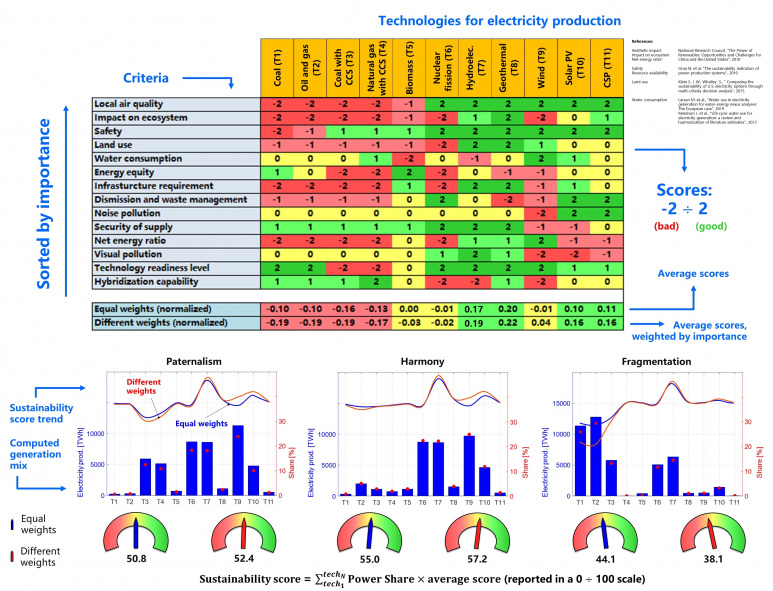Introducing a new sustainability metric for the evaluation of the power sector mix in TIMES models
Activity carried out within the MSc thesis project of Daniele Mosso (tutored by Prof. Laura Savoldi, Daniele Lerede and Matteo Nicoli).
Objective of the activity: Generate an open access Italian Reference Energy System to be used for long-term energy projections.
Among energy system optimization models, those of the TIMES family are able to analyze scenarios based on a diverse set of socio-economic assumptions and different degrees of technological advancement. The technologically explicit and detailed nature of such models makes them a valuable tool for decision making on future energy issues. The set of parameters used to describe both supply and end-use demand technologies is devoted to produce the minimum-cost configuration of the investigated energy system. The TIMES framework allows the user to specify a set of constraints to consider the environmental impact of the supply and end-use technological mix. In a sustainability perspective, however, the analysis is limited because CO2 emissions are the only parameter considered to assess the impact on climate change. In this activity, we propose to integrate in the well-established TIMES modeling framework a sustainability metric for the evaluation of the computed supply mix, considering a set of social and environmental sustainability criteria. Those criteria are expressed by appropriate indicators, based on an evaluation of the related impacts. Eventually, the whole sustainability level of power sector technologies mix obtained by TIMES optimization is evaluated through a combination of the scores assigned to each technology, and then expressed with easily understandable sustainability labels. The resulting sustainability evaluation should then be translated into a variation of input parameters for the model, consistently with the selected quantitative indicators, and the TIMES optimization should be iterated with new input data set, with the effect to perform a sustainability optimization together with the economics.
See more:
- Poster presentation for the Climate Exp0 and Global Renewable Energy Researchers Meet


